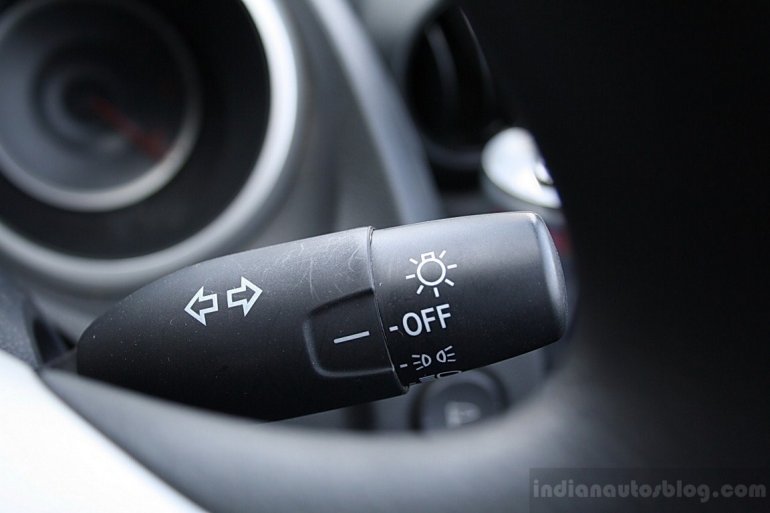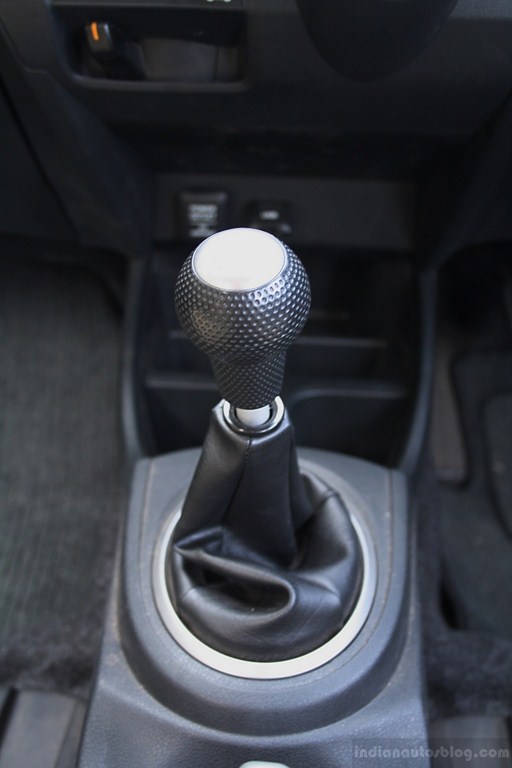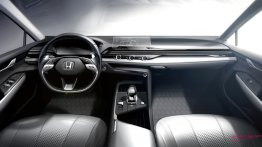‘Man maximum, Machine minimum’ is Honda’s philosophy of making cars. 80% importance is given to the driver of the car and only 20% is given to the car. So clearly, you expect the Honda Jazz’s interiors to be cleverly packaged.
And it does. Clever interior packaging is the strongest USP of the Jazz among many. The unique positioning of the fuel tank below the belly of the car and the the cab-forward layout has liberated oodles of space on the inside. It is not just the sheer volume of space of the Jazz that impresses you but also the high flexibility in using the available space
The large front doors make ingress and egress very easy. Once inside the Jazz, you will notice the huge glass area around you that brings more light into the cabin making it feel more airy and spacious. You may find yourself taking time in getting used to the all-round visibility of the Jazz because of its sheer width and the fact that the base of the windscreen which is very far off. The wide front quarter glass could give rise to some nasty blind spots. When driving into sunlight, you also get a lot of reflection off the dashboard back onto the windscreen
The stylish and quite grippy steering wheel is lifted from the Honda Civic and features steering mounted controls for easy audio access. Sadly there are no thumb pads on the steering wheel and its telescopically not adjustable.
Being a Japanese car, you will find that the wiper and indicator stalk are on the traditional side of the steering wheel.
The orange colored readout and the red needles makes the information on the instrument cluster very easy to read. A small MID screen below the speedo provides vital information such as range, distance-to-empty, average FE, etc. We would have loved if this information could be controlled by a button on the steering wheel rather than a traditional prong in the instrument cluster.
Like a traditional Honda dashboard layout, the center console tilts away from the driver. It is a beautifully designed center console that befits a ‘premium hatchback’. The only problem is that because of the center console’s push-forward design, it may intrude the legroom of a tall driver. Yet another part from the Honda City’s bin, the golf ball shaped gear knob, finds its place inside the Jazz’s cabin.
The integrated OEM music system does a very good job of playing your favorite songs. It has a built-in CD, radio, aux & USB capability. Sadly there is no Bluetooth compatibility to play songs off your mobile phone. The volume of the music system is automatically adjusted by the speed of the car. The head unit is designed is such a way that you cannot install a custom unit without making a mess of it. Not that you would want to anyway.
There are plenty of storage solutions in the Jazz’s cabin, the biggest one being a double glovebox. There are a total of ten cup holders in the car.
Two of them are innovatively placed right below the AC vent which means they keep your drinks cool - excellent feature if you are having a can of Redbull, not so excellent if it is a cup of hot coffee.
Front seats are kingsize wide and comfy with plenty of headroom to wear a cowboy hat comfortably. The contoured bucket seats provide a really good seating position.
Sadly, there are no lights integrated in the visors – a feature that is very common these days. The pedals are well spaced out but the dead pedal is absent. Honda has just provided a small rubber padding instead of a proper dead pedal.
And we head to the rear of the Jazz where you will find it is designed to carry 3 people in utmost comfort. If two passengers are sitting behind they will sorely miss the lack of an armrest. They will also miss a dedicated rear AC vent and a plug point. No complaints about the headroom or the legroom at the rear.
The Honda Jazz is fitted with something called as ‘Magic Seats’. Essentially, you can endlessly choose between different combination of seating arrangements to maximize the luggage area. Sure a lot of hatchbacks provide this feature but it’s the ease of usage where the Jazz takes the cake.
Every single seating combination is just a one finger job. You can even fold away the rear seats to maximize the boot space to a colossal 1,320 liters from a seat up luggage capacity of 384 liters. Magic indeed!
The rear hatchet is wide enough to parallel park with utmost ease. Honda should have endowed the Jazz with a set of parking sensors for its price.
The engineering of the Jazz’s interior is impeccable and commendable. The dashboard materials are of top quality and so are the fabrics used in the seats and door pads. Leather seats should have been available in the top-end model. The ergonomics are just perfect for any and every driver.
The Honda Jazz’s interior is an 101 lecture in practicality, usability and space efficiency. It can be a hatchback when you want it and a mini MPV when you need it. To sum it up - the Honda Jazz nails the four pillars of luxury - Space, Light, Comfort and Silence with a big sledge hammer!

































